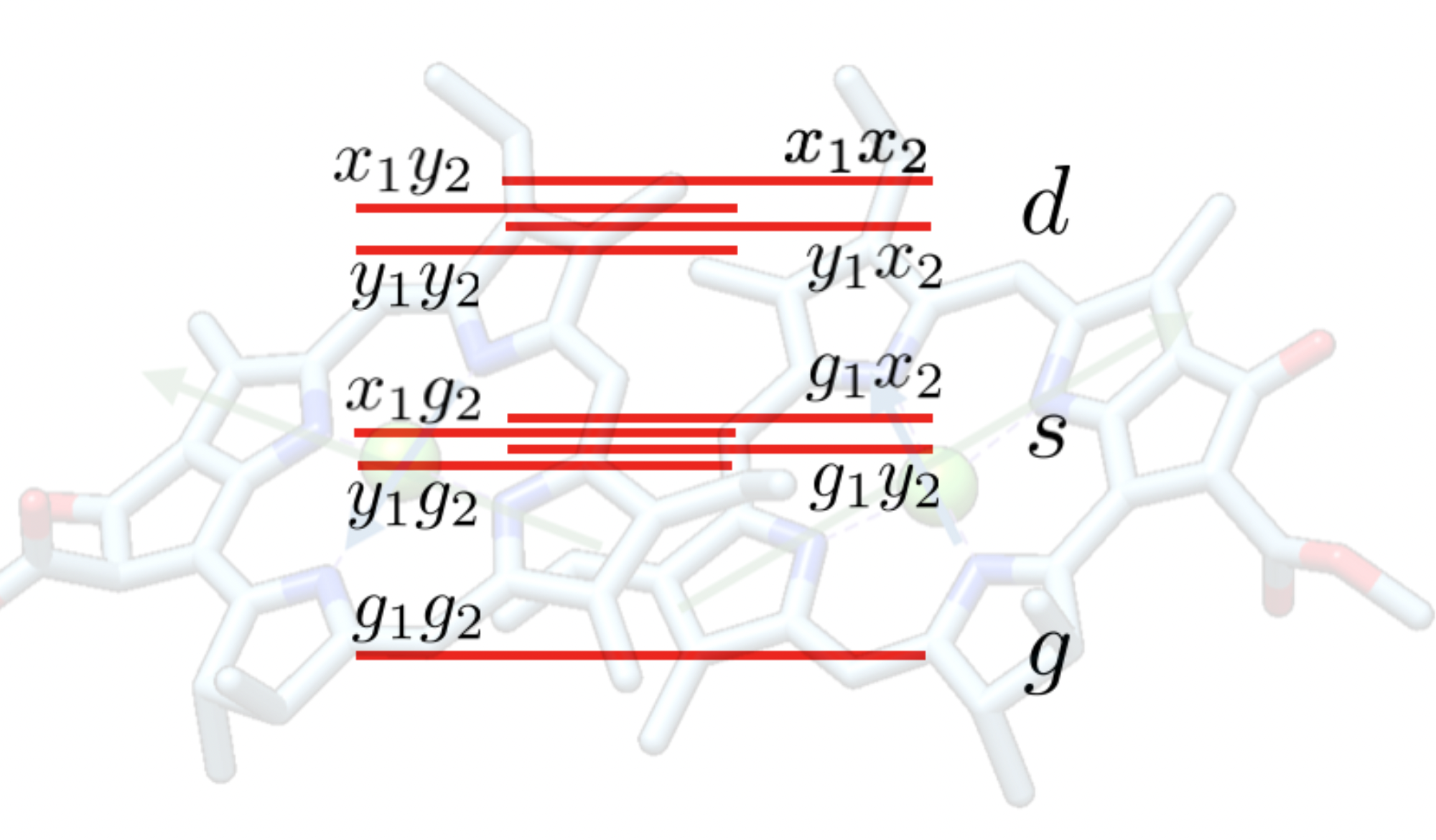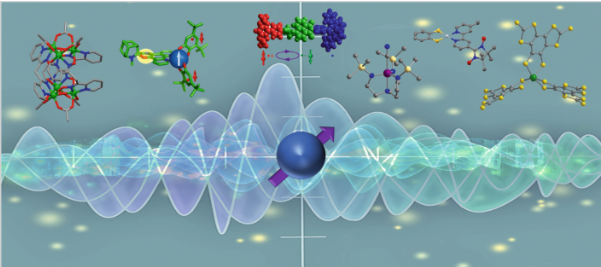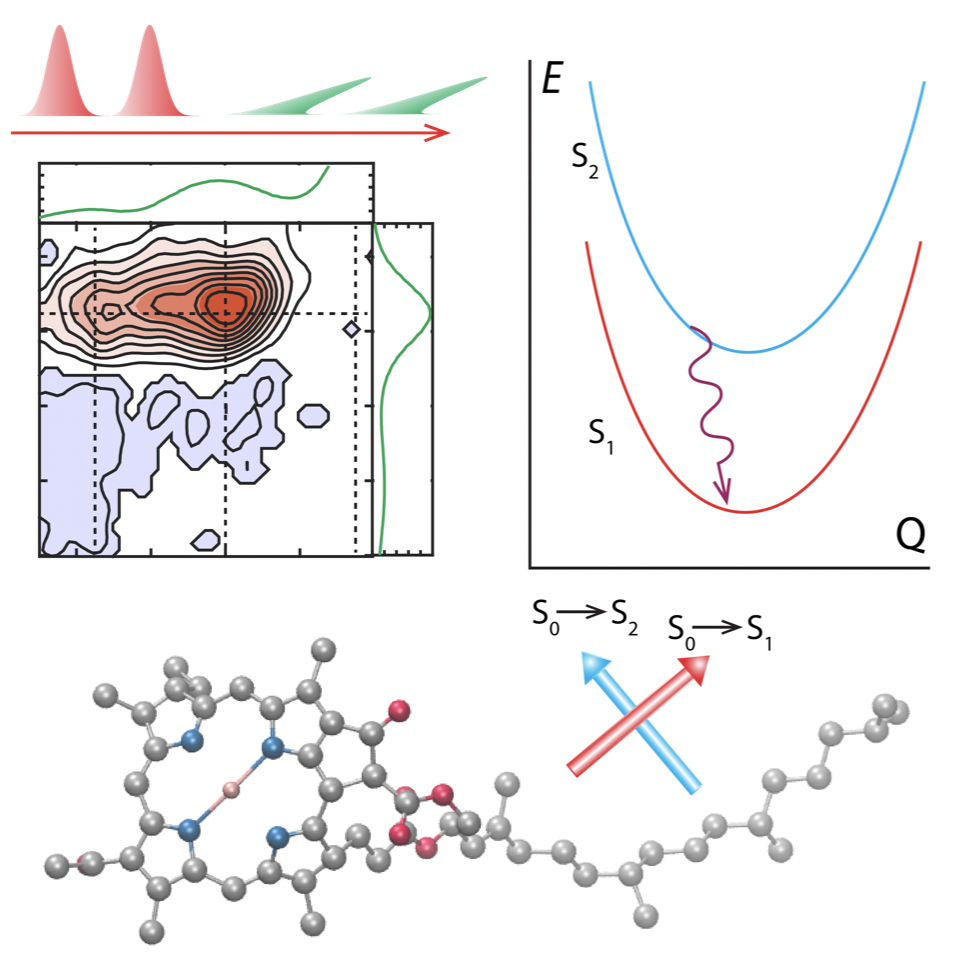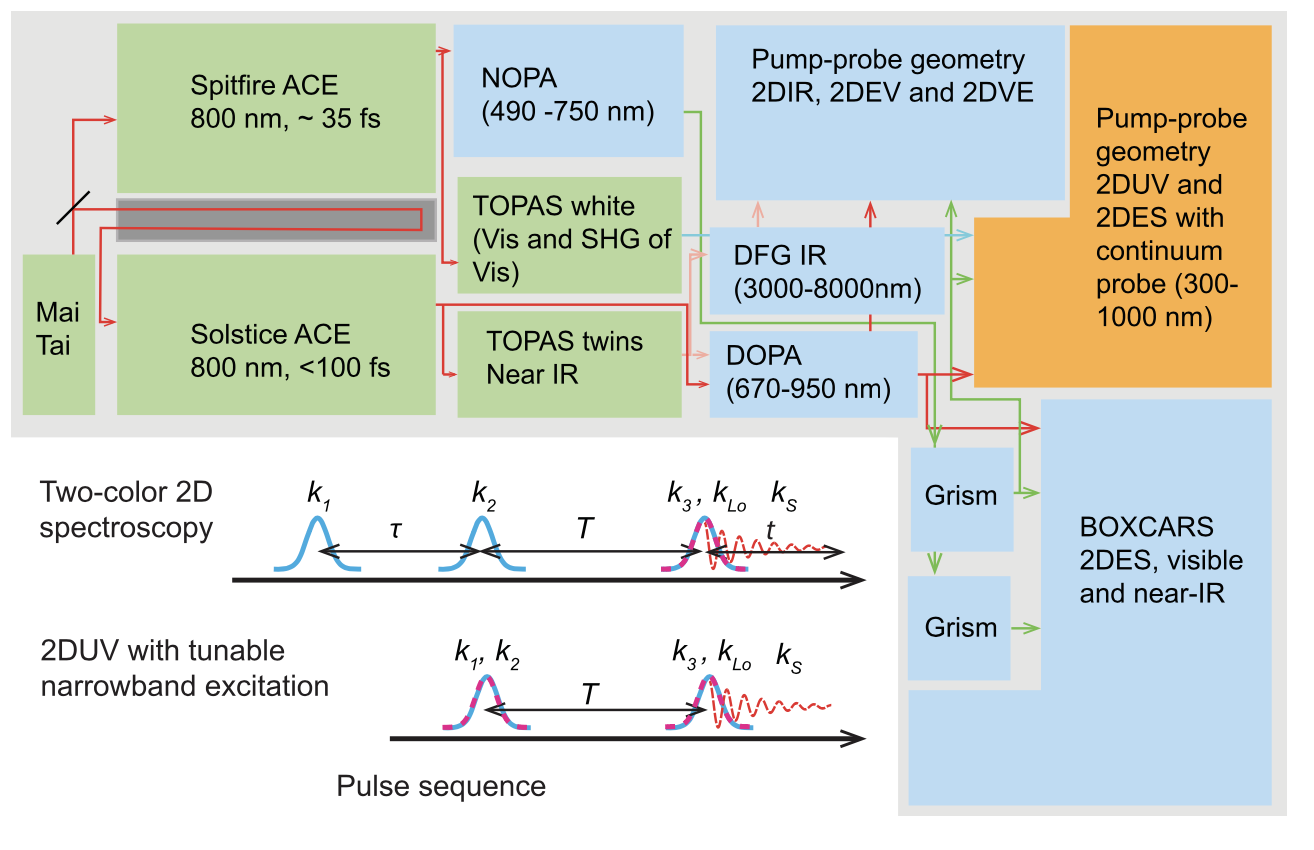Yogita Silori, Bin Liu, Yongxi Li, Stephen R. Forrest, and Jennifer P. Ogilvie
Exciton transport and charge transfer in donor-acceptor (D-A) heterojunctions are critical in governing the power conversion efficiency in organic photovoltaics (OPVs). Despite advances in organic photovoltaic materials, exciton transport is hindered by structural disorder that limits device efficiency. Exciton polaritons, formed through the strong coupling of cavity-coupled organic materials, exhibit delocalized states that enhance exciton transport and reduce the effects of disorder. Using transient absorption spectroscopy, we explore strong coupling in D-A heterojunctions integrated with a distributed Bragg reflector “open cavity.” The delocalized hybrid polariton state slows charge transfer compared to non-cavity-coupled control samples. These findings underscore the role that polaritons play in exciton transport and charge transfer. Understanding and controlling this interaction, along with the optimization of photonic structures, may lead to increased performance of OPVs and polaritonic devices.




















